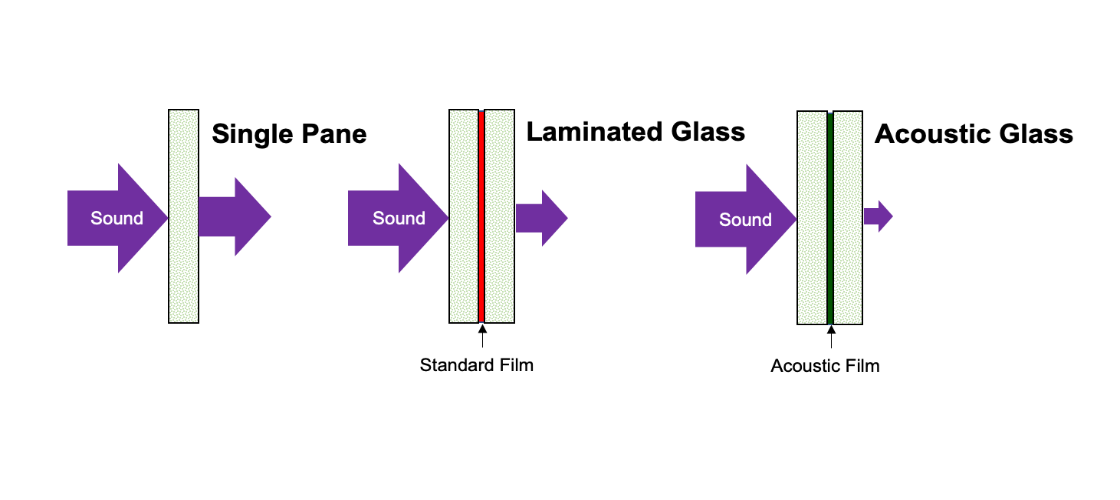01704 895035
sales@thermospan.co.uk
01704 895035
sales@thermospan.co.uk

Noise pollution and its intrusion into buildings is a growing environmental concern and nuisance, especially in urban areas.
Even the background noise of 70 decibels caused by outside traffic can cause disturbance and stress over time.
Acoustic glass technologies have been developed to combat levels of unwanted noise from roads, rail or airports.
They may also be used in applications that require substantial, specialist sound control like radio and TV stations, translator booths, hospitals, etc.
Acoustic glass is a specialist glass designed to reduce sound transference across its body.
A single pane of 4mm glass has a sound reduction level of about 25dB, increasing to 28dB for a 2x4mm insulating glazing unit.
Sound levels can be reduced further by increasing the thickness of the glass and increasing the number of panes. However, the most effective way to improve sound reduction is by introducing a bonded layer between the panes of glass. This interlay absorbs sound energy and prevent sound vibrations from travelling through the glass.
The interlayer is clear and will not affect the light passing through the pane.